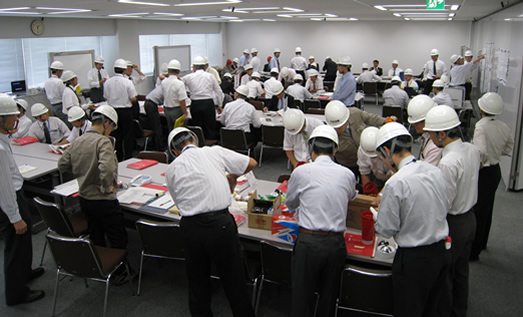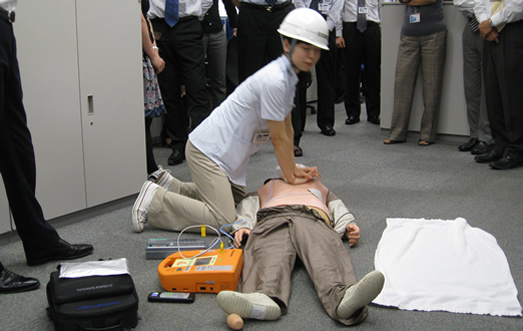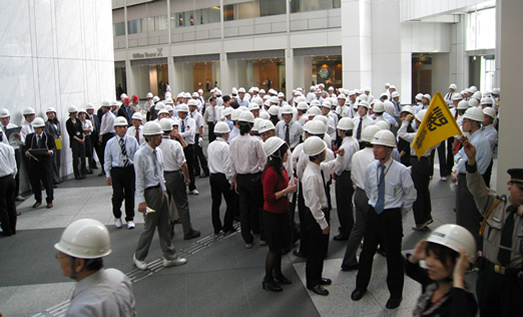Sumitomo Metals Conducts Disaster Training as Part of Business Continuity Planning (BCP)
2009.10.01
- Sumitomo Metal Industries, Ltd.
Today, Sumitomo Metal Industries, Ltd. (Sumitomo Metals) conducted training based on the premise that a major earthquake had hit the Tokyo metropolitan area. All directors and employees (about 600) who work at the Tokyo head office participated in the training exercise.
In addition to drills of various actions stipulated in the Emergency Countermeasure Manuals, under the direction of the Emergency Headquarters (about 70 staff led by President Hiroshi Tomono as its General Manager), Sumitomo Metals conducted a training exercise that entailed returning home and coming back to the office on foot via the "Kitaku Shien" roads (the government identified the roads where support services would be provided to people who have to return home on foot.) The company also conducted another training exercise that entailed transferring business operations (i.e., order receipt, manufacturing instruction, and shipment management ) to the Osaka head office, in cooperation with trading companies and transporters. In this way, the Company will ensure the safety of employees and stable supply of products and services to customers in the case of an emergency.
As this was the fifth training session of this kind at the Tokyo head office, no prior notice was given regarding the starting time or program this year so that all the participants could think and act by themselves based on their know-how and knowledge. It was also regarded as a comprehensive training exercise that covered almost all expected situations in the case of a major earthquake, with the aim of improving practical capabilities in the case of an emergency. The participants became familiarized with hardware and tools such as the Earthquake Early Warning System, an emergency messaging service, a satellite telephone, emergency power sources, and a portable wireless device. In addition to the same drilling programs as in the previous exercise, this occasion included the new addition of training usage of AED, "triage-method" rescue training, and an evacuation exercise in which everyone including visitors participated.
Sumitomo Metals will continue to promote, assess, and continuously improve its Business Continuity Planning (BCP). The Company will ensure a system to promptly restart and continue important businesses in the case of a major earthquake or other unexpected contingencies. This will lead to a sustainable improvement in corporate value.
1.Outline of this year's disaster training
(1) Implementation date
October 1, 2009 (Thursday) 13:10 – 15:30.
(2) Main activities
The following training programs were conducted without prior warning of the starting time or the program to all participating employees.
|
2.Future initiatives
Based on the results of the survey given to all the participants, the Company plans to identify areas for improvement, revise the Disaster Countermeasure Manuals, conduct training sessions, and double check matters at the next major training exercise.

Disaster head quarters

AED training, using a manikin

Evacuation drill of all employees
